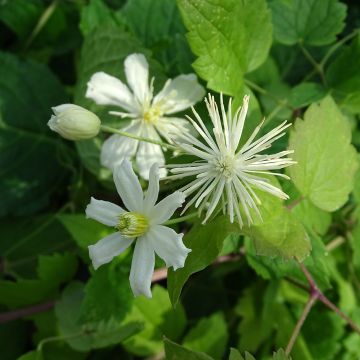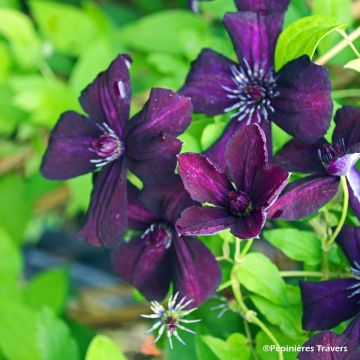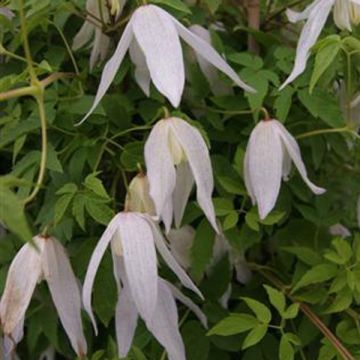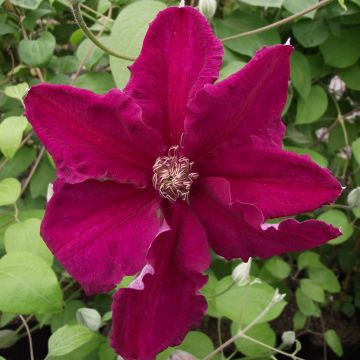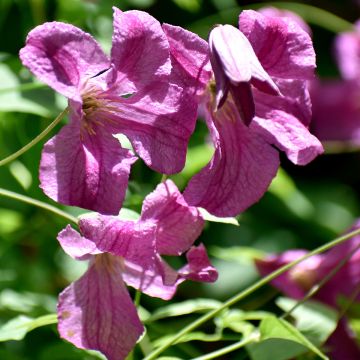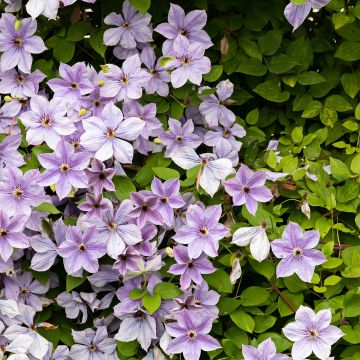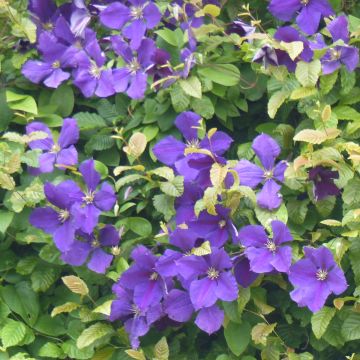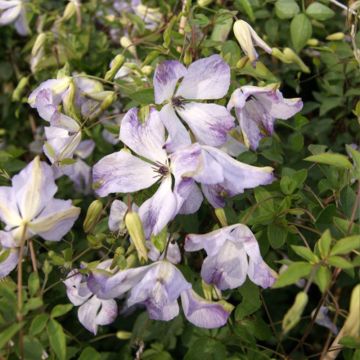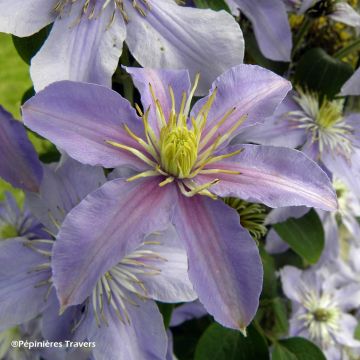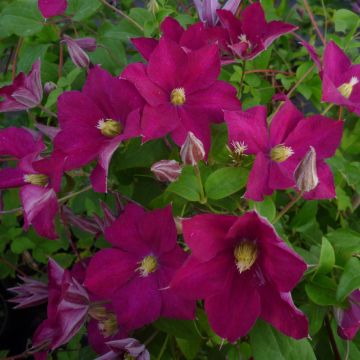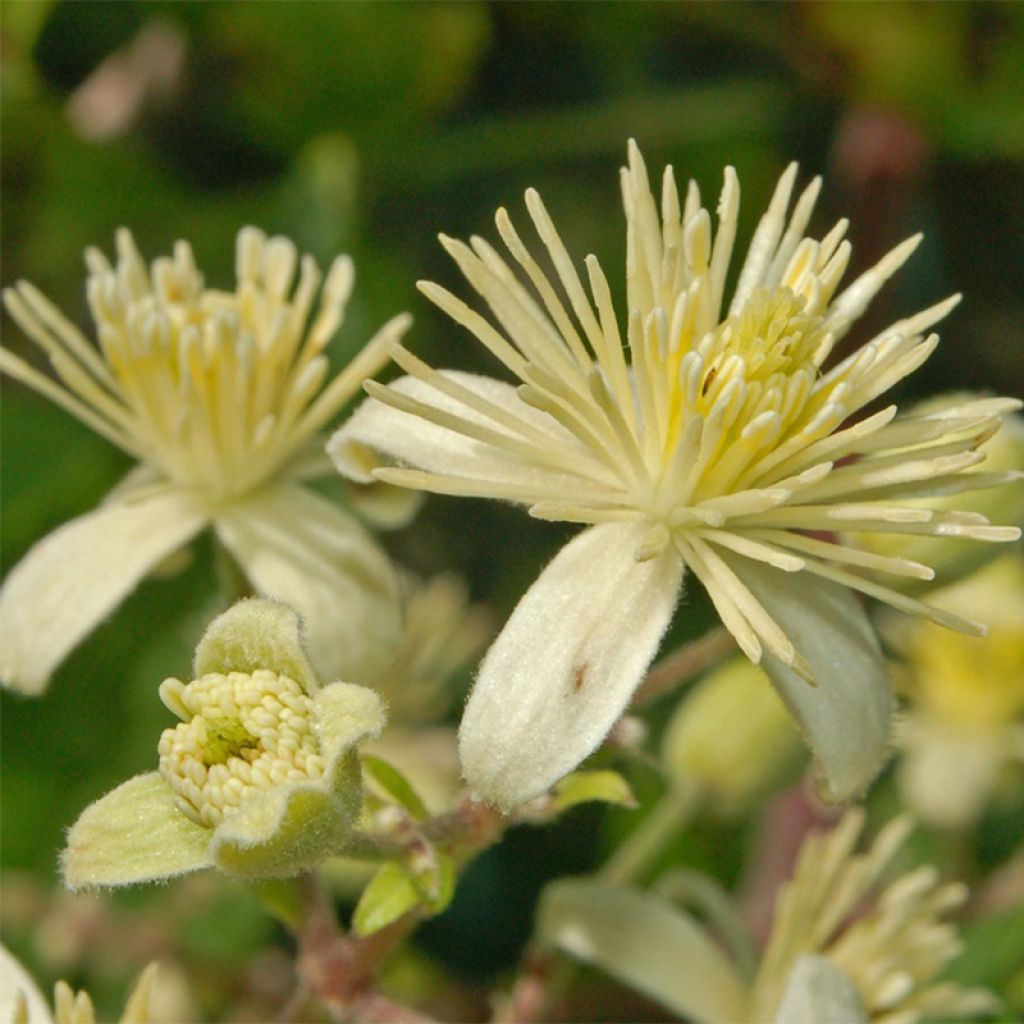

Clematis vitalba - Old Man's Beard
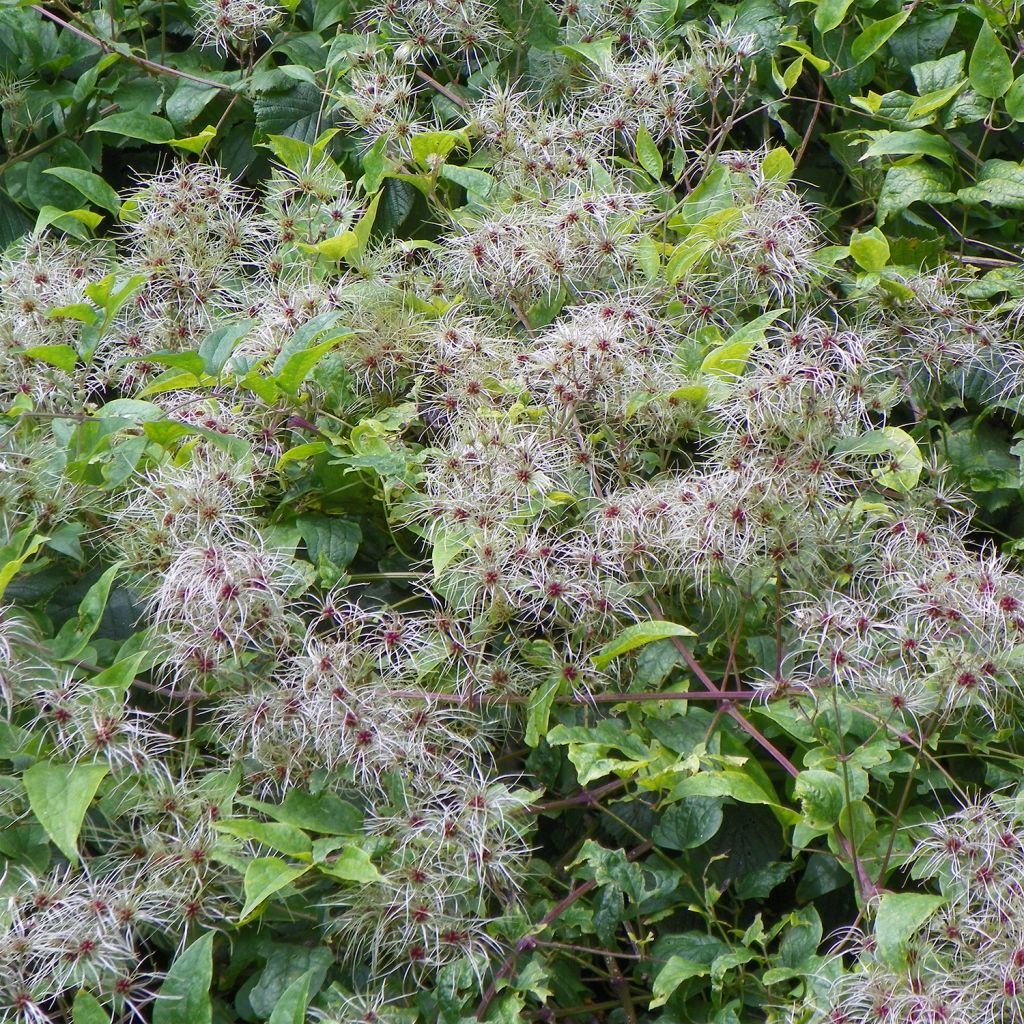

Clematis vitalba - Old Man's Beard
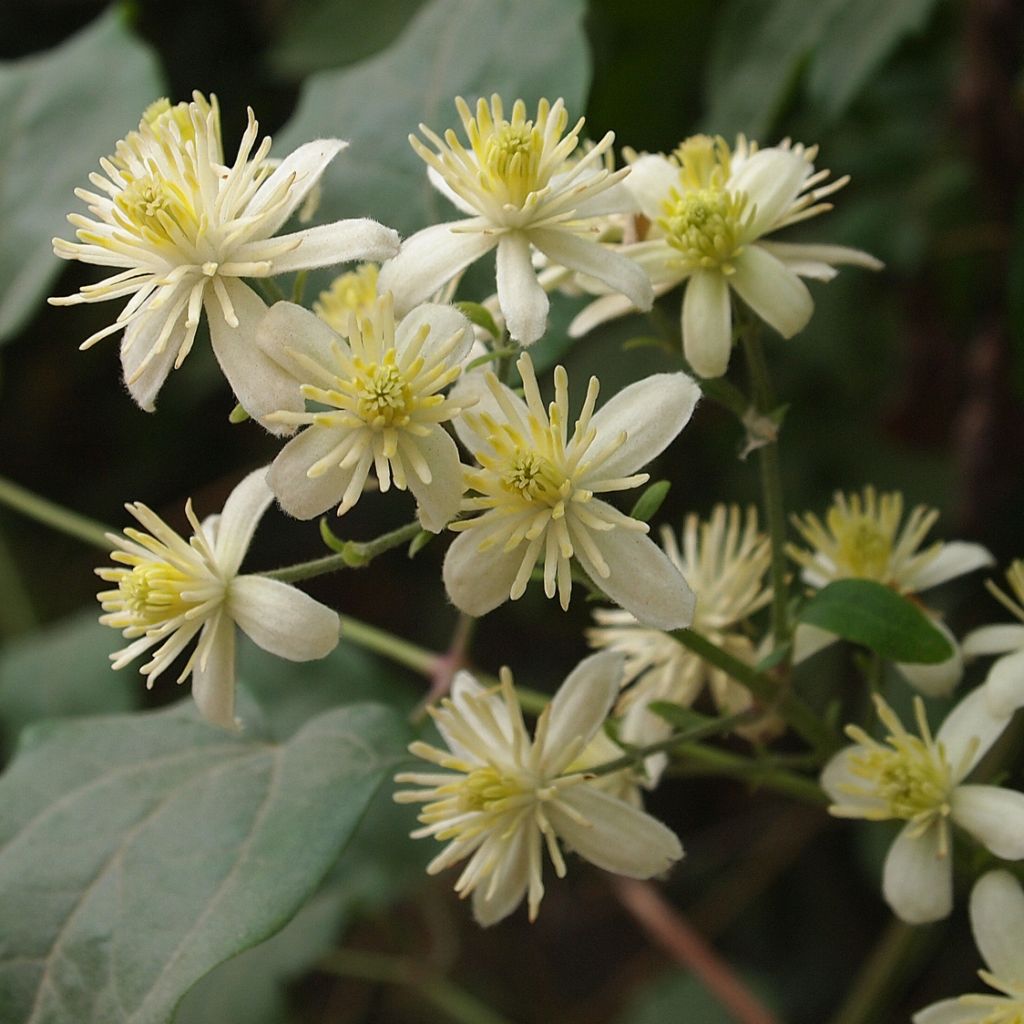

Clematis vitalba - Old Man's Beard
Clematis vitalba - Old Man's Beard
Clematis vitalba
Old Man's Beard, Traveller's Joy
This item cannot be shipped to the selected country
Delivery charge from €5.90
Delivery charge from €5.90
More information
Schedule delivery date,
and select date in basket
This plant carries a 6 months recovery warranty
More information
We guarantee the quality of our plants for a full growing cycle, and will replace at our expense any plant that fails to recover under normal climatic and planting conditions.
From €5.90 for pickup delivery and €6.90 for home delivery
Express home delivery from €8.90.
From €5.90 for pickup delivery and €6.90 for home delivery
Express home delivery from €8.90.

Does this plant fit my garden?
Set up your Plantfit profile →
Description
Clematis vitalba is also known as the Hedge Clematis, White Vine Clematis, or Beggar's Herb. This common botanical species, long known for its medicinal properties, is a massive, woody, climbing plant, which can reach 25m (82ft) long over time. It spreads its long leafy branches on trees and along hedges, covering itself in countless small, greenish-white flowers with a ruffled centre which are particularly fragrant in the evening. Its round and silky fruits remain on the plant for a long time like small, silvery flakes on its bare branches in the heart of winter. This vigorous clematis may sometimes make its way into your garden and will fit well in a garden that embraces nature and protects biodiversity.
The Clematis genus belongs to the Ranunculaceae family. The botanical species vitalba, also known as the wood clematis, is native to France. It is a perennial climbing vine that turns woody over time. It is very vigorous and floriferous, grows quickly and lives for many years to reach an impressive size. It is classified in the group of clematis that flower until autumn on the current year's growth. The main stem can measure up to 10cm (4in) in diameter on an old plant, while the sturdy secondary branches become as thick as a finger. Flowering begins in July and continues until September. The very fragrant and nectar-rich inflorescences are pale panicles of 4-petaled flowers, arranged around a centre of prominent and ruffled stamens, measuring 1 to 2cm (0 to 1in) in diameter. The flowers are followed by characteristic, feathery, silvery, and silky, very decorative seed heads. The deciduous foliage is opposite leaves, composed of 3 to 9 ovate and pointed leaflets. The twirling, evergreen petioles wrap around support, allowing the vegetation to anchor firmly, even when dry. The stems turn woody over time and their initially smooth bark takes on a yellowish-grey hue and peels off in thin strips.
Clematis vitalba is so vigorous that it competes with climbing vines to cover unsightly buildings, dead trees, or unsightly fences. Plant your clematis on either side of the support to be covered. Its pretty seed heads will blend well with the purplish foliage of dyer's vine, and its flowering will take over from fragrant clusters of climbing roses. This clematis, which will bloom in semi-shade, will smother weeds plants on the edge of undergrowth or near abandoned walls. It needs space but very little maintenance and it is easy to grow in the sun, in fertile and well-drained soil. It is a good plant for gardens and natural undergrowth, as it nourishes and protects numerous insects and animals, creating a habitat rich in biodiversity.
The plant was formerly used in natural, topical medicine. Its sap has analgesic and circulatory properties, but its toxicity should not be overlooked; the fresh sap can blister the skin, a trait that beggars used in ancient times, hence the nickname beggars' herb.
Report an error about the product description
Clematis vitalba - Old Man's Beard in pictures
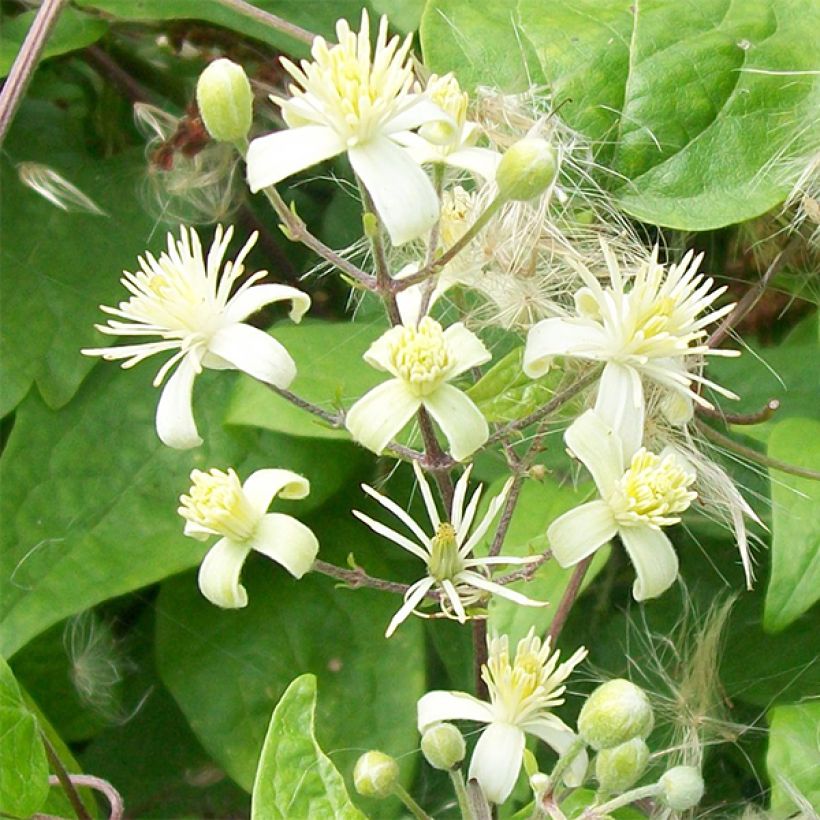

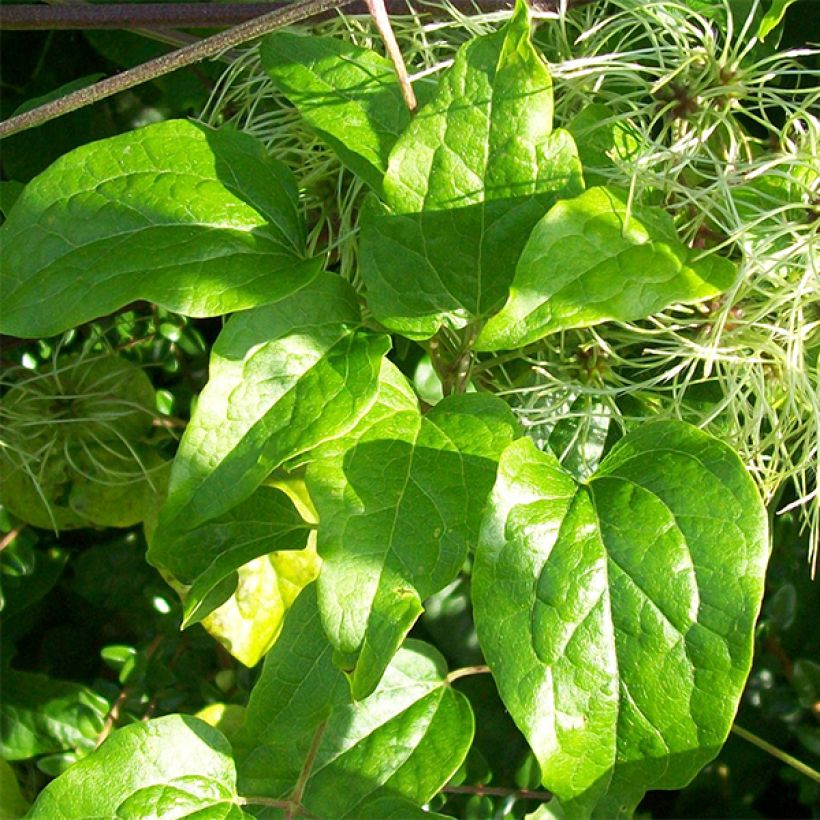

Plant habit
Flowering
Foliage
Botanical data
Clematis
vitalba
Ranunculaceae
Old Man's Beard, Traveller's Joy
Western Europe
Other Clematis Vitalba
Planting and care
Clematis vitalba should be planted in spring or autumn, 5cm (2in) deep, with the root ball laid flat on the ground and not vertically as usual, with its head in the sun and foot in the shade. Cover the base with a small mound of soil to encourage new shoots. After planting, prune the stems to 30cm (12in) from the base, above a pair of buds. Train them loosely to help the plant cling on its own later. Pruning is not essential, it will only be necessary to contain the vigorous growth of this plant in winter.
This species is adapted to all climates, tolerating cold, heat, and even drought if the soil is deep. It prefers nitrogen-rich, clayey, loamy and stony soil on a limestone subsoil. It is a nitrophilous plant, meaning it likes nitrogen. When it grows in the wild, it is an indicator of nitrogen-rich, therefore fertile, environments.
Planting period
Intended location
Care
-
, onOrder confirmed
Reply from on Promesse de fleurs
Clematis
Haven't found what you were looking for?
Hardiness is the lowest winter temperature a plant can endure without suffering serious damage or even dying. However, hardiness is affected by location (a sheltered area, such as a patio), protection (winter cover) and soil type (hardiness is improved by well-drained soil).

Photo Sharing Terms & Conditions
In order to encourage gardeners to interact and share their experiences, Promesse de fleurs offers various media enabling content to be uploaded onto its Site - in particular via the ‘Photo sharing’ module.
The User agrees to refrain from:
- Posting any content that is illegal, prejudicial, insulting, racist, inciteful to hatred, revisionist, contrary to public decency, that infringes on privacy or on the privacy rights of third parties, in particular the publicity rights of persons and goods, intellectual property rights, or the right to privacy.
- Submitting content on behalf of a third party;
- Impersonate the identity of a third party and/or publish any personal information about a third party;
In general, the User undertakes to refrain from any unethical behaviour.
All Content (in particular text, comments, files, images, photos, videos, creative works, etc.), which may be subject to property or intellectual property rights, image or other private rights, shall remain the property of the User, subject to the limited rights granted by the terms of the licence granted by Promesse de fleurs as stated below. Users are at liberty to publish or not to publish such Content on the Site, notably via the ‘Photo Sharing’ facility, and accept that this Content shall be made public and freely accessible, notably on the Internet.
Users further acknowledge, undertake to have ,and guarantee that they hold all necessary rights and permissions to publish such material on the Site, in particular with regard to the legislation in force pertaining to any privacy, property, intellectual property, image, or contractual rights, or rights of any other nature. By publishing such Content on the Site, Users acknowledge accepting full liability as publishers of the Content within the meaning of the law, and grant Promesse de fleurs, free of charge, an inclusive, worldwide licence for the said Content for the entire duration of its publication, including all reproduction, representation, up/downloading, displaying, performing, transmission, and storage rights.
Users also grant permission for their name to be linked to the Content and accept that this link may not always be made available.
By engaging in posting material, Users consent to their Content becoming automatically accessible on the Internet, in particular on other sites and/or blogs and/or web pages of the Promesse de fleurs site, including in particular social pages and the Promesse de fleurs catalogue.
Users may secure the removal of entrusted content free of charge by issuing a simple request via our contact form.
The flowering period indicated on our website applies to countries and regions located in USDA zone 8 (France, the United Kingdom, Ireland, the Netherlands, etc.)
It will vary according to where you live:
- In zones 9 to 10 (Italy, Spain, Greece, etc.), flowering will occur about 2 to 4 weeks earlier.
- In zones 6 to 7 (Germany, Poland, Slovenia, and lower mountainous regions), flowering will be delayed by 2 to 3 weeks.
- In zone 5 (Central Europe, Scandinavia), blooming will be delayed by 3 to 5 weeks.
In temperate climates, pruning of spring-flowering shrubs (forsythia, spireas, etc.) should be done just after flowering.
Pruning of summer-flowering shrubs (Indian Lilac, Perovskia, etc.) can be done in winter or spring.
In cold regions as well as with frost-sensitive plants, avoid pruning too early when severe frosts may still occur.
The planting period indicated on our website applies to countries and regions located in USDA zone 8 (France, United Kingdom, Ireland, Netherlands).
It will vary according to where you live:
- In Mediterranean zones (Marseille, Madrid, Milan, etc.), autumn and winter are the best planting periods.
- In continental zones (Strasbourg, Munich, Vienna, etc.), delay planting by 2 to 3 weeks in spring and bring it forward by 2 to 4 weeks in autumn.
- In mountainous regions (the Alps, Pyrenees, Carpathians, etc.), it is best to plant in late spring (May-June) or late summer (August-September).
The harvesting period indicated on our website applies to countries and regions in USDA zone 8 (France, England, Ireland, the Netherlands).
In colder areas (Scandinavia, Poland, Austria...) fruit and vegetable harvests are likely to be delayed by 3-4 weeks.
In warmer areas (Italy, Spain, Greece, etc.), harvesting will probably take place earlier, depending on weather conditions.
The sowing periods indicated on our website apply to countries and regions within USDA Zone 8 (France, UK, Ireland, Netherlands).
In colder areas (Scandinavia, Poland, Austria...), delay any outdoor sowing by 3-4 weeks, or sow under glass.
In warmer climes (Italy, Spain, Greece, etc.), bring outdoor sowing forward by a few weeks.

































